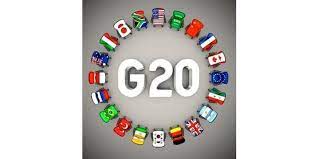CURRENT AFFAIRS
Get the most updated and recent current affair content on Padhaikaro.com
The G-20 Anti-Corruption Working Group
- IAS NEXT, Lucknow
- 14, Oct 2021

The G20 Anti-corruption Working Group, which for the first time includes sport as a specificity within its mandate, has reached consensus on the draft high level principles on Preventing and Combating Corruption.
About ACWG:
Established by G20 Leaders at the Toronto Summit in 2010.
- Responsible for updating and implementing the G20 Anti-corruption Action Plan.
- Reports to G20 Leaders.
- It cooperates closely with and supports the work of relevant international organizations, including the Organization of Economic Cooperation and Development, the United Nations, the World Bank, the International Monetary Fund and the Financial Action Task Force.
What is the G20?
The G20 is an annual meeting of leaders from the countries with the largest and fastest-growing economies. Its members account for 85% of the world’s GDP, and two-thirds of its population.
- The G20 Summit is formally known as the “Summit on Financial Markets and the World Economy”.
Genesis of G20:
After the Asian Financial Crisis in 1997-1998, it was acknowledged that the participation of major emerging market countries is needed on discussions on the international financial system, and G7 finance ministers agreed to establish the G20 Finance Ministers and Central Bank Governors meeting in 1999.
Full membership of the G20:
Argentina, Australia, Brazil, Canada, China, France, Germany, India, Indonesia, Italy, Japan, Mexico, Russia, Saudi Arabia, South Africa, South Korea, Turkey, the United Kingdom, the United States and the European Union.
What is G20+?
The G20 developing nations, also called G21/G23/G20+ is a bloc of developing nations which was established on August 20, 2003.
Its origins can be traced to the Brasilia Declaration signed by the foreign ministers of India, Brazil and South Africa on 6th June 2003.
- The G20+ is responsible for 60% of the world population, 26% of the world’s agricultural exports and 70% of its farmers.
